
A general overview: During the cold war, the Soviet Union developed the most formidable naval force in the world, second after the US Navy. However aside its strategy of “carrier-killers”, the high command was also aware of the threat of US submarines that could jeopardize its very long coastline and communication lines both in the pacific and Mediterranean, plus the Baltic. Like allied powers in WW2, Soviet planners looked at the development of the dedicated ASW vessel that was smaller and cheaper than a destroyer, but it would wait until 1943 to be started and 1945, partly inspired by German WW2 torpedo boat designs, at that time a versatile susbtitute of a destroyer, but soon, ASW specialists were developed.
Over the course of 43 years, nine main Soviet frigate types were developed, with one particular shining above all else: the versatile and arguably overarmed Krivak class. Today’s Admiral Gorshkov-class, which replaced them, has almost double the tonnage of the latter, continues this tradition of versatile, rather than ASW-specialized vessels. The Krivak, under a modernized form, is still in construction today (Admiral Grigorovich class) and exports are more important than domestic construction in today’s Russia.
Evolution of Soviet frigates during the cold war
Genesis: Soviet WW2 Submarine Warfare vessels
Cold War frigates originated in WW2 designs. There was no Frigates in Soviet service during the war, but two lines of ships that Soviet Engineers could draw upon to formulate a smaller and less versatile design than destroyers: Guardships and Fleet Minesweepers. The former of the Yastreb, Albatros and Uragan class displaced around 900 tonnes and were armed with several 100 or 104 mm guns and TT banks, with minelaying capabilities. The latter were 400 to 700 tonnes vessels armed with less guns or lighter DP 45 mm guns, and often doubled as minelayers.
The postwar Kola class, studied already from 1944, draw upon the Tral class coastal mineswpeers, of which 48 were built before the war, from 1935 and up to 1940. Displacing 434 to 490 tonnes FL they were armed with a single 100 mm gun and one 45 mm AA, rails for 30 mines. They were distributed in four fleets and four were lost during the war, others were unfinished. There was a submarine threat in the baltic and on the way to Murmansk and several types of ships covered the perile but no dedicated vessel was built for the task.
Soviet destroyers never carried deep charges or DC throwers, but all were equipped for minelaying. Mines indeed made submarine warfare excessively difficult for U-Boats. Axis sub threat was almost inexistent in the black sea (but a set of ex-italian midget subs in 1944), while Vladivostok remained too far away from the IJN, with limited means.
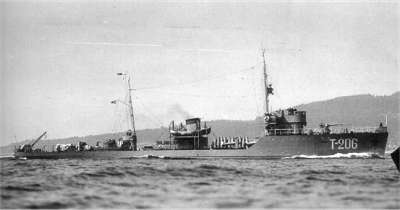
Project 3 class minesweepers
The only dedicated ships in the Soviet Navy were a serie of submarine chasers: The Mo2, Mo4, Bo2, BMO, TK, and BO201 types. The latter were ex-US SC types delivered via lend-lease in 1943-45, while the others were light boats, ranging from 32 to 74 tonnes. The lighter and more numerous were the “TKA” class, reclassed as wooden-built D-3 MBTs, and the 138 lend-lease SC boats, followed by the larger sub-chasers of the BMO types, armoured (48), BO2 type (17), MO4 type (8), and Mo2 type (6). War experience and observation of allied Frigates, corvettes and escort destroyers provide the Soviet Navy some insight about how ASW warfare should be made.
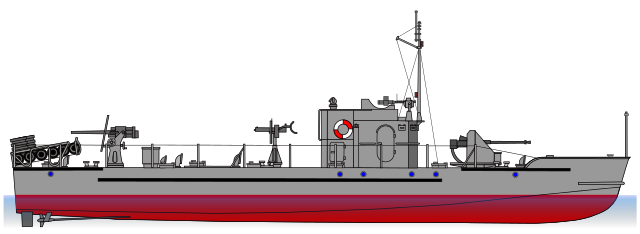
BMO class sub-chasers of WW2
But development of a more efficient doctrine and an entire sway of the Soviet Navy gradually took shape after 1947, when it became clear that the US submarine threat was real, and that dedicated ships were needed to protect Soviet assets if USSR wanted to project its power globally.
The cold war saw the last Soviet Sub-Chasers built (more on a dedicated post): The MO-269 small submarine chasers or project OD-200bis, built 1946-1948. They were followed by the Project 201 boats (MPK class) built from 1955, also treated elsewhere, and the SK-15 boats in 1958, better known as the “Kronstadt” and “SO-I” (Project 122 bis) classes.
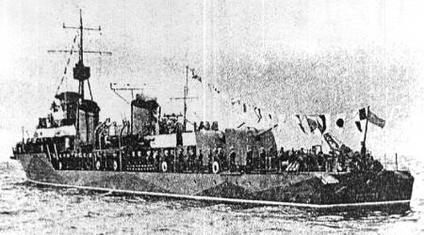
Project 28 Yastreb class guardships, the ancestor of the Project 37 to 42 development.
Multirole frigates of the 1950s: Kola, Riga

This was less about ASW warfare that to provide the Navy with a cheaper substitute to destroyers in 1943 that drove Project 37 by decision of the naval staff on 21 August 1943. The latter was designated SKR for Storozhevoi Korabl (escort ship). An effort was made on a redesign of the Yastreb class, project 29. Of these guard ships, only four of the 20 planned were ever completed, cut shot by the invasion. Project 37 was setup in 1943, a preliminary TTZ for a new SKR, but in 1945 Stalin argued the Yastreb was the largest acceptable type, with 900 tonnes as a limit. Blueprints for a modified Yastreb were approved on 30 January 1946.
However construction never took place whereas new draft requirements were accepted on 29 July 1946. As defined, their role included convoy escort, patrol, amphibious ops support, and minelaying. Displacement was raised to 1800 tonnes, speed to 26-27 knots and two 130 mm guns for armament, quad 45 mm AA and 25 mm AA mounts plus four DC throwers and two DC racks and hedgehog M10. For the first time, ASW warfare was integrated in the design.
And for the first time also since 1917, two design bureaus, TsKB-32 and TsKB-53 competed. The first proposed the smallest design, with two paired diesel engines of 6700 bhp, 1860 tonnes and 5000 nm of endurance at 15 knots. The second was a 1925 tonnes ship with 13,000 ship on each shaft. However as in many other soviet designs of the time, the draft requirements were unrealistic and it was decided to cut the displacement down to 1300 tonnes and the armament was reduced to four 100 mm, two 37 mm AA, two mousetrap ASWRL, and two DCR. The final design of Project 42 was approved on 21 June 1947 and the design was revised again notably for modular construction and adoption of DC current onboard.
Sokol, the lead ship, was laid down 17 August 1949, and launched in march 1951 but accepted in August. The class would comprise also the Berkut, Kondor, Grif, Crechet, Orlan, Lev and Tigr. They would reach 1900 tonnes in displacement and their initial ASWRL replaced by RBU-900 and then RBU-2500 systems. Designers in 1945 looked the war prizes German late torpedo boats for inspiration, in the superstructures and hull shape.
But the Kola class were rather large and costly ships, and only eight were produced, while the admiralty exploited the “light” TsKb-32 design, which became project 50, the Riga class.
The latter became the staple of Soviet ASW warfare in the first two decades. Reaching 1480 tonnes fully loaded, mass-produced using modular construction, 68 ships were built. They were also exported to Bulgaria and East Germany. They had one less gun, 37 and 25 mm AA guns, MBU-600 systems, 4 DCT, 2 DCR and could even lay mines. They were a bit like the “Kotlin”, simpler follow-on to the big Neustraschimyy. It was apparently Stalin that ordered a smaller SKR, limited to 1200 tonnes standard.
ASW frigates of the 1960s: Petya, Mirka
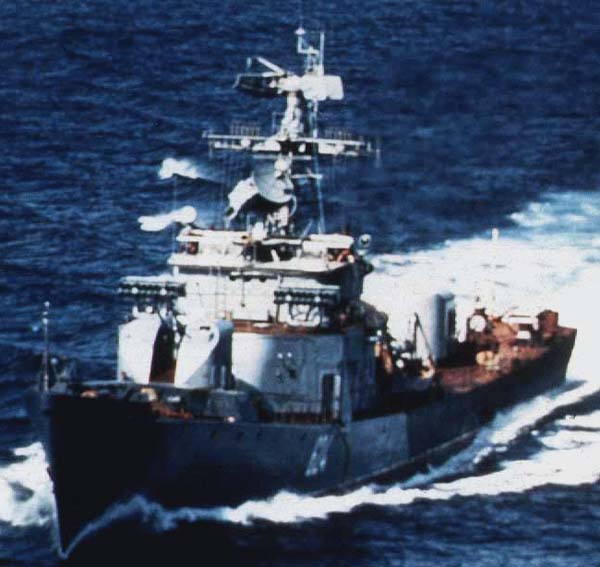
Petya I class ship underway (hazegray coll.)
ASW warfare, with the next generation diesel-electric late attack submarines, and more so with the first early SSNs (nuclear attack submarines) required also a new generation of ASW frigates; Two models were experimented, the Petya were certainly the most successful and the true succession of the Riga-class for the 1960s.
The Petya-class ships were the first gas turbine-powered ships in the Soviet navy and they were specialized in anti-submarine warfare in shallow waters. They were generally similar to the Mirka-class frigates, built from 1956 specifications.
Their machinery comprised three shaft with the central one for cruising. The AA capability was limited by their single radar director. Export vessels swapped the ASW 406 mm TTs with antiship 533 mm (21 in) TTs but their ASW suite was comprehensive notably with VDS. The long serie was built between two yards, Kaliningrad Yantar shipyard (22) and Khabarovsk yard (32) and they were exported to six countries, some stayed in service well after 1995 when the last Soviet vessels were decommissioned.
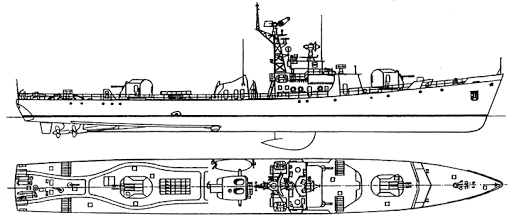
Petya class schematic plan
Genesis of the design went back to the end of the 1950s, for a submarine hunter named project number 159, small and specialized, approaching the patrol ships project 50. A characteristic feature was the solution using of a combined diesel-gas turbine arrangement, in which the diesels worked on the axial shaft, and gas turbines outboard. The choice was also made of the AK-726 76-mm double-barrelled gun mount coupled with the Fut-B control radar as the main air defense system. For the first time also in the Russian Navy small-sized anti-submarine torpedoes were used, as well as the new RBU-2500 ASWRL. Surveillance was provided by the Fut-N general-purpose radar and two Titan and Vychegda GAS antennae, located in a stationary fairing under the keel. The fairing made of titanium, a first in Russian shipbuilding.
The lead ship of project 159 (SKR-1) was launched in 1961. In 1965, the first serie of 19 was built and it was decided to start a second improved serie with project 35 armament. It was denominated project 159A and the serie ended in 1972 with 29 ships, armed with the RBU-6000 and second torpedo tube plus upgraded radar system. In NATO nomenclature, there are called Petya I and II with at least two sub-variants each. They formed the bread and butter of the Soviet ASW ‘green water’ force, but still were much smaller and less versatile than the last USN Frigates.
The Mirka class ships was tailored for anti-submarine warfare in shallow waters and close copy of the Petya-class ships, with a modified machinery, two shafts with combined diesels and gas turbines (CODAG) and tunnels propellers early, water jets), but they proved noisy and unreliable, a liability in ASW warfare. For this reason, production was limited to 18 ships, from Yantar shipyard in Kaliningrad. None were exported and the ships were decommissioned 1989-1992.
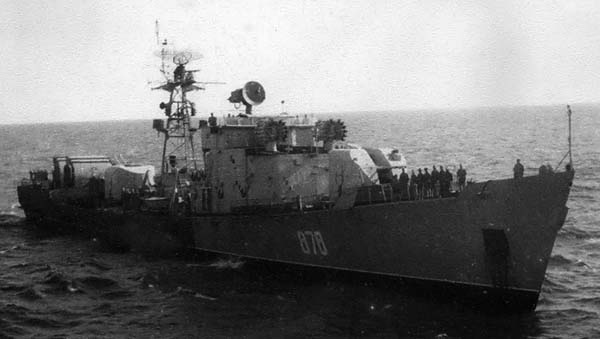
Mirka class ship (from youtube)
Large Multirole frigates of the 1970s: The Krivak class
Project 1135 was nothing short of a revolution. They came out as successor of the Riga, but soon the admiralty wanted to improve their versatility to counter USN Frigates, and design work started probably in 1957 as a Kynda style forecastle hull, high seas, long range frigates. As the design was refined, the admiralty also looked at the USN Brooke class (1968), predecessor of the Perry, and way more larger than the previous ASW frigates. Indeed none was above 950 tonnes, wheras the Brooke/Garcia class displaced 3400 tonnes fully loaded, and had much greater versatility and range.
The Project 1135 design evolved much over time, but the admiralty wanted from the start a battery of three twin 76 mm and two quadruple 57 mm AA guns for AAW warfare and presumably a pressured-fired steam powerplant. Speed was indeed specified to be ideally of 35 knots, in stark contrast with previous ASW Frigates reaching 28-29 knots. There were to be also self-defence heavy torpedo batteries (21-in), but not at that stage yet, missiles of any sorts. The studies also mixed a picket radar ship equipped with the new radar Top Sail. in 1963 as an export gas turbine version of the project was offered to Indonesia, in 1964 the project evolved to include a SA-N-4 launcher, in place of the forward 57 mm quad mount.
However a the same time planners spoke of a special narrow sea rocket combatant for the black sea and Baltic. This became project 50 and it was to integrate with two triple SS-N-9 SSMs. However as ASW was still paramount, the frigate project was redesigned again, this time with a single quadruple SS-N-14 trainable launcher, to free space for ASW and other systems. The electronic suite was also upgraded considerably. In the end the project was redesignated BKPs, and SKR again in 1979. They were eventually designed as short range antiship shooters capable of 38 knots, still with impressive AASW and ASW capabilities. Construction of the lead ship started at Kaliningrad, and Bditelnyy was launched in 1970. To reflect on their scale, with 3750 tonnes in displacement they were named after former destroyers, contrary to previous ASW vessels, just numbered.
ASW corvettes of the 1970s: The Grisha class
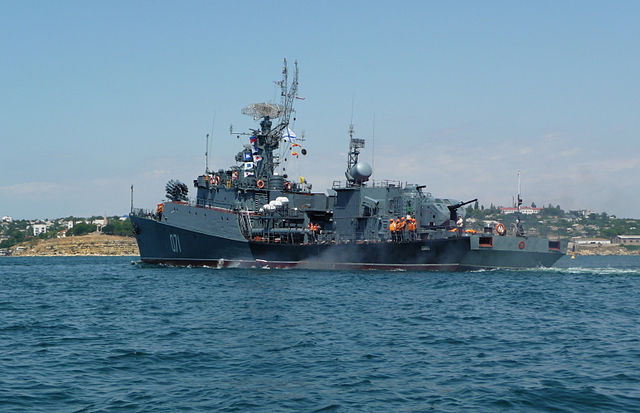
Project 1124M Suzdalets in 2009
Technically, the Grisha class ships were corvettes, and not Frigates. So they should not be included here, and rather being treated in a dedicated post, and portal page on Soviet Corvettes. Anyway, they are interesting to be included there, as they inherited many characteristics of the previous SKR, Petya, Mirka class ASW Frigates. They were built at the same time as the brand new, and much larger Krivak class and reflected in some ways also, the upscaling in the Soviet Navy of the 1970s. Indeed, the designation “corvette” was a conditional adaptation as a small anti-submarine ship or in Russian Малый противолодочный корабль romanized as Malyy protivolodochnyy korabl or ‘Small anti-submarine ship’, MPK.
Soviet designation was Project 1124 Albatros. They were dedicated anti-submarine corvettes, built by the Soviet Union between 1970 and 1990. This was late enough to survive the fall of the USSR and still being completed by the Russian Federation, for both the Russian and Ukrainian Navies. They had a limited range and were used only in coastal waters, fitted with upgtaded ASW systems and now relying on a SA-N-4 ‘Gecko’ SAM for close fence rather than gunnery alone. They innovated also by being fitted with retractable fin stabilizers. They were are used by the Georgian and Lithuanian navies and were succeeded by the Steregushchiy-class corvettes from 2001, and nowadays, the stealthy Gremyashchiy-class corvettes from 2011, almost as large as the former Krivak class.
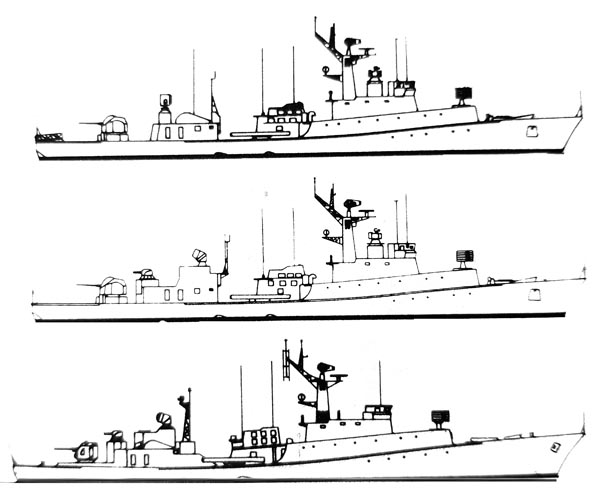
Grisha I, II and IV (Conways profiles).
Late cold war ASW vessels of the 1980-90s: Parchim to Neutashimyy
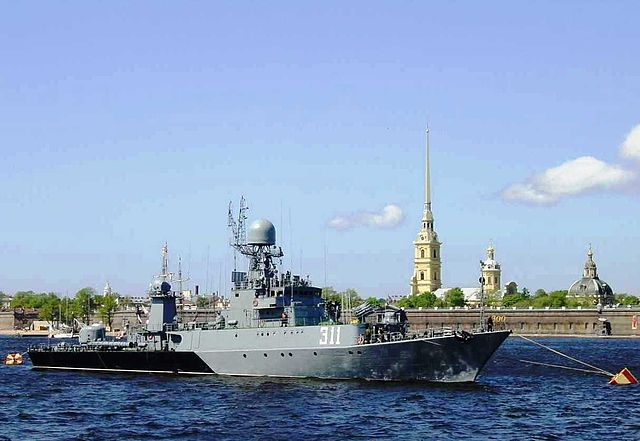
Kazanets, a Parchim class
Three classes are to be considered before the fall of USSR: The Parchim II were esentially German-built Corvettes (the denomination was applied as they seemed now too light at 900 tonnes to be classed as “Frigates”). The Parchim were indeed ordered by the USSR to East Germany as to subidise the German shipbuilding industry, which had excellent quality reputation. The former East-German ships were later exported to Indonesia. Due to their limited range and tonnage they were virtually coastal ASW specialists for the Baltic. They carried no missiles, but a twin 57 mm gun AK-725 and twin 30 mm gun AK-230 for self-defence, light SA-N-5 MANPAD, two RBU-6000 aand four 400 mm torpedo tubes plus 12 depth charges, as worthy replacement for the Mirka/Petya ships.
The Koni class were essentially small export Frigates started in the late 1970s. They were much simpler and smaller (1900 tonnes FL) than the Krivak class ships, but yet, they possessed missiles and were versatile and heavily armed for their size, with range priming on speed (27 knots), and carrying a single SA-N-4 launcher with 20 missiles, four SS-N-2C Styx anti-ship missile launchers, four 76.2 mm DP guns and four 30 mm plus two RBU-6000 ASWRL. They would even carry mines and were widely exported. Only the lead ship was kept in service with the Soviet Navy, used to train futures crews of the exported vessels. From then on, USSR (and Russia afterwards) used to create Frigates and corvettes fitting local fleets requirements so as to built only two ships, and relying on exports to cover the R&D expenses.
Tactical doctrine of Soviet Frigates
NATO’s analysis of Soviet surface ASW combatants
It is hard to find a dedicated scenario to answer Soviet Frigates specifically, but rather Soviet combined arms strategies in case of war: One of the most important aspect of this was the The GIUK gap which became the focus of naval planning in the 1950s. This natural passage between three landmasses was the only one open to the Soviet Navy and only available outlet into the Atlantic Ocean. It was of course focused on Soviet submarines operating from their bases on the Kola Peninsula.
NATO made scenarios about possible disruptions of naval convoys reinforcing Europe from the U.S. as Soviet submarines could stay in pre-arranged position along this gap and strike at will. Both USN an RN post-war naval strategy was to find ways of blocking this gap. One was installing a chain of underwater listening posts across like SOSUS. Past the detection, Iceland could have been chosen as an advanced base for NATO ASW Frigates.
The Royal Navy developed the Invincible-class anti-submarine carriers using Sea King helicopters and Type 23 frigates were originally pure ASW weapons systems, but their missions were expanded after the Falklands. The Soviets themselves thought to reverse-use the GIUK gap to spot and attack incoming aircraft carriers, with dedicated cruisers, cruise missile attack submarines and the Tupolev Tu-142.
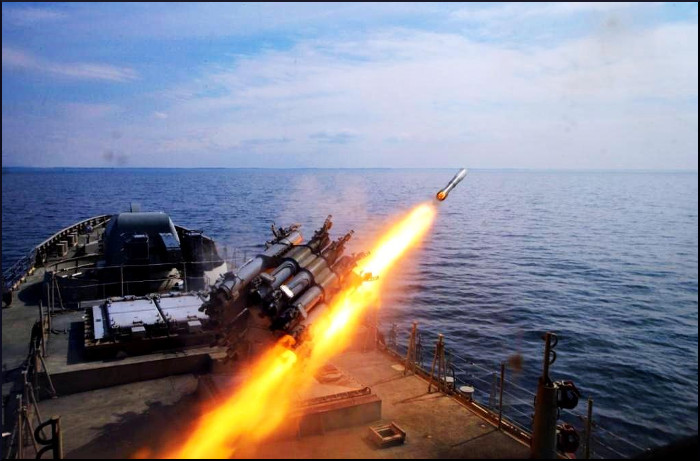
RBU-6000 in action (INS Tabar).
In a case of naval confrontation between European NATO navies (in order of engagement, West Germany and Sweden, UK, and in case of a black sea fleet scenario, Turkey at the first line, Greece, and then Italy, and finally France and Spain. For the Pacific fleet, both Japan (JSDNF), the local US fleet and South Korean fleets could be involved and after 1970, the Chinese PLAN itself could become a potential ally in case of a Soviet Pacific fleet attack. It is true that the immense majority of Soviet Frigates were grouped in the north, between the Northern Fleet and Baltic fleet. All major scenarios involved statistically a fight in these areas, especially the Baltic, where naval operations could help supporting ground operations, bringing diversionary landings behind enemy lines along the way. True, this was only a thing in the 1980s, not the 1950s, as it took 30 years of the Soviet Union to developed a consistent amphibious force.
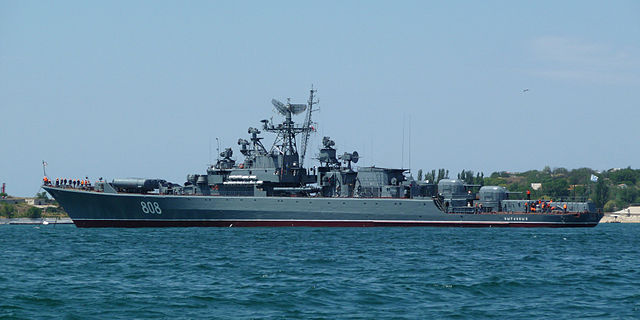
Project 1135M Pytlivyy 2009
Soviet Frigates of the Kola and Riga class were relatively versatile ships, poor substitute for destroyers and escorts, but the next Petya and Mirka vessels were dedicated light (cheap) coastal ASW ships, intended to deal with NATO submarine threat along the territorial waters. In the 1970s however the implication of USSR on the global sphere to counter US influence which was the driver force behind the development of a blue water navy, mirrored the growing exports that could help finance the immense part of GDP devoted to the defense sector; in particular in developing, decolonized countries where cheap Soviet hardware found a natural market. In this context, frigates needed to be long range and more versatile, possibly to act for missions discharging destroyers for more important tasks, but still with a strong ASW overall speciality.
That’s why the Krivak class (Burevestnik class) was an important step which inflexed the doctrine behind the use of frigates by the Soviet Union. The Krivak class missile system notably was versatile, the new SS-N-14 (today RPK-3 Metel “snowstorm”) was indeed the first dedicated anti-submarine missile in the Soviet Navy, and constituted a significant upgrade. It mirrored NATO’s ASROC system and was a clear departure from the RBU-6000 and RBU-1000 family, basically an inheritance of WW2 Hedgehog. NATO’s identification popular joke for this important class was “Hot dog pack, Smokestack, Guns in Back”. At last, with a 3500 tonnes vessel, USSR had an equivalent, if not superior vessel to USN Frigates, as it was heavily armed for its size.
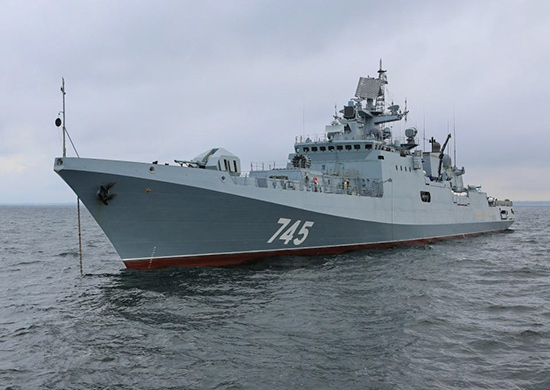
Today, the Russian Navy has “capital ships” in the shape of the nuclear-powered Petr Velikiy and aircraft carrier Kuznetsov, three Slava-class missile cruisers (carrier-killers) two Sovremenny-class destroyers, up to eight Udaloy-class large ASW DDs, between the fleet. But more modern are the two Neustrashimyy-class frigates (Baltic) and two Krivak (Black Sea), two Admiral Gorshkov-class and three Admiral Grigorovich class vessels for the baltic and black sea (called by NATO Krivak IV as they derived from this class). A far cry from the wide array of 1970s Frigates and corvettes of the Soviet Navy.
In this context, the ratio of force is clearly in favor of NATO, with 6 German Type 212 submarines, 5 French Rubis class SSNs, 7 British SSNs (Trafalgar and Triumphant), 3 Spanish, 6 Italian, 2 Portuguese, 13 Turkish, 9 Greek, 5 Polish, 6 Norwegian, 5 Swedish, 4 Dutch, and of course potentially 50 USN SSNs(32 Los Angeles, 3 Seawolf, 15 virginia), so potentially 121 submarines, only for the European theatre (src). Facing this, Russia has 26 SSK and SSNs plus two Oscar class SSGNs. The latter are rather more carrier-killers than sub-hunters.
A Frigate story: Storozhevoi’s mutiny
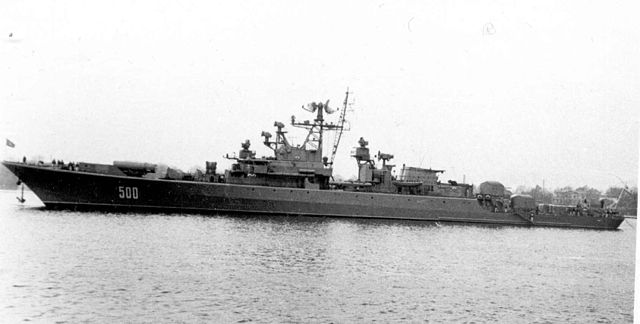
Although this point will be more detailed in a dedicated post about the Krivak class, the inspiration for Tom Clancy’s “the hunt for Red October” and the movie that was made in 1990 with Sean Connery, Sam Neill and Alec Baldwin was in fact inspired by a mutiny in a Soviet Frigate, certainly less dramatic than the latest giant SSBN “Typhoon-II”… Storozhevoi was a Krivak I class ship, launched in 1971. Also the history was somewhat reverted as the mutiny was not led by the captain, but the ship’s political commissar, 3rd rank Capt. Valery Sablin. He wanted to denounce the corruption of the Apparachiks under the Brezhnev administration and return to a “purist” communist party (not defect to the west !).
Basically his plan was to rally the crew and seize the ship, then leave Riga for Leningrad through the Neva River, and moor alongside the museum ship Aurora as a revolution symbol, and from there, broadcast a nationwide address to the people, hoping to trigger and change of regime. He took his plan to execution on 9 November 1975, locking the captain and win a vote among officer for his plan, adopted at 8 vs. 7.
Like in the novel however as soon as the ship was reported missing and then, the mutiny evident, the admiralty feared Sablin would follow the path of Jonas Pleškysa and ask political asylum in Sweden, also delivering to NATO a recent Frigate. Soon, half the Baltic fleet (13 ships) was thrown into hot pursuit as well as 60 warplanes. Planes managed to damage the ship’s rudder and she stopped dead just 20 miles of Swedish waters, to be later boarded by Soviet marine commandos. Sablin was judged guilty of all charges or treason and shot in August 1976.
Kola class Frigates -8 ships (1951-53) – Project 42
“Kola” was the NATO reporting name. These Frigates were the first built for the Soviet Navy in the 1950s. Soviet designation was “Storozhevoi Korabl” or escort ship, Project 42, not “frigat”. “These ships were analogous to World War II era destroyer escorts or German Elbing-class torpedo boats. The programme consisted of only 8 ships as these vessels were considered to be too expensive for series production and the smaller and cheaper Riga-class frigate was built instead. Radars and sonars were fitted.
Design
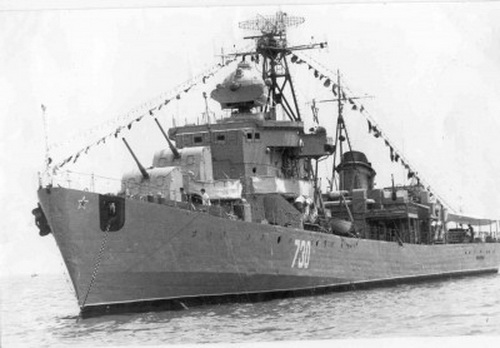
Sokol, of the Kola class Frigates
The ships were essentially designed for patrolling Soviet waters, and escorting convoys. The design derived from a 1946 specification, two design bureau competing for the first time, one with diesel and steam turbine machinery. The hull was welded, longitudinally framed and machinery arranged with alternating boiler rooms and turbine rooms. The armament consisted of four single 100 millimetres (3.9 in) DP guns and torpedo tubes, in a general shape reminiscent of late war German torpedo boats. Only eight were built, at Yantar Yard in Kaliningrad and first major ships from this shipyard after the new borders were redrawn by treaty.

Kola class Frigates – src
Indeed Kaliningrad was the former Königsberg, an old Teutonic stronghold in the Baltic.
Armament was lightened much, with two twin 76 mm (3 in) guns and four RBU-6000 anti-submarine rocket launchers, but only 2 in some ships. They were also given specific ASW torpedoes, with a single bank of five 406 mm (16 in) anti-submarine torpedo tubes. Some ships also differed in having two of such banks (so ten tubes) and the export vessels were given a conventional triple 533 mm (21 in) torpedo tubes bank.
The electronics suite comprised the following:
A surveillance Radar Don-2, Slim Net, Hawk Screech and the Herkules hull mounted & dipping sonar.
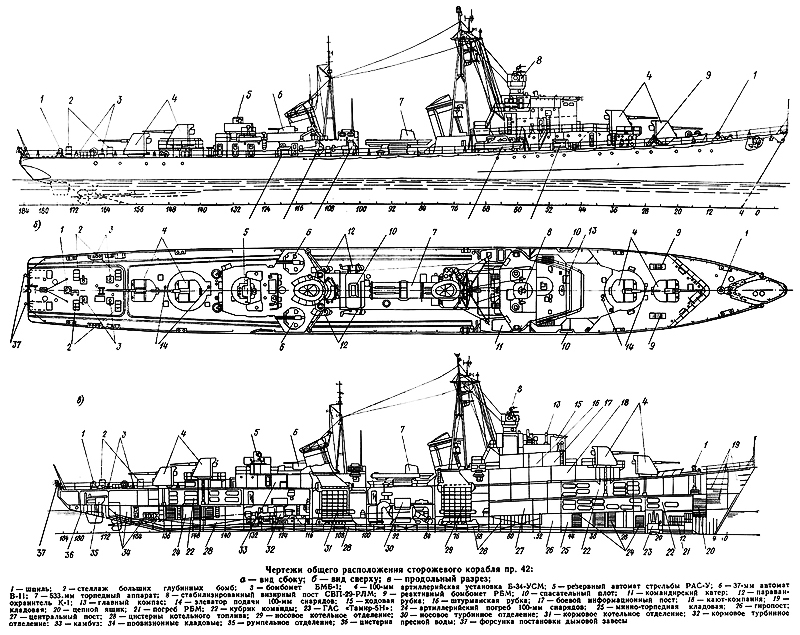
Tech Scheme of the kola class ships.
Sokol was transferred to the Caspian Sea and scrapped 1970s, Berkut, same, Kondor, lost in grounding accident near Murmansk in 1962, Grif transferred to the Caspian, Krechet, Orlan also transferred to the Caspian, Lev and Tigr, scrapped in the 1970s. They were versatile ships, substitute for destroyers in lower-intensity theaters and for easier tasks. Status as for today:
-One in the Azerbaijani Navy, still operative
-Four ships in the Egyptian Navy acquired between 1965 and 1971: One sunk in combat (1973) one remaining in service.
-Four ships of the Ethiopian Navy, all sold for scrap in Djibouti following the independence of Eritrea
-11 ships for the RIN, locally designated the Arnala-class corvettes now decommissioned and reclassified as corvettes.
Two in the Syrian Navy: Extant in derelict condition, Tartus port, decommissioned. One happened to have been sunk by the Russian air force, used as a training target on 15 April 2018 off the coast of Syria.
-Five in the Vietnam People’s Navy apparently still in service.
Specifications:
Displacement: 950/1,150 tons standard
Dimensions: 96 x 10.8 x 3.2 mm (315 x 35 x 10 ft)
Propulsion: 2 shaft CODAG: 2 gas turbines, diesel, 30,000 hp + 6,000 hp
Speed: 30 knots (56 km/h; 35 mph)
Range: 4,870 nm/10 kts, 450 nm/30 knots
Complement: 90
Armament: 2×2 76 mm, 2-4× RBU 6000 ASWRL 5× 406 mm TTs, 48 DC
Riga class Frigates -68 ships (1953-56)
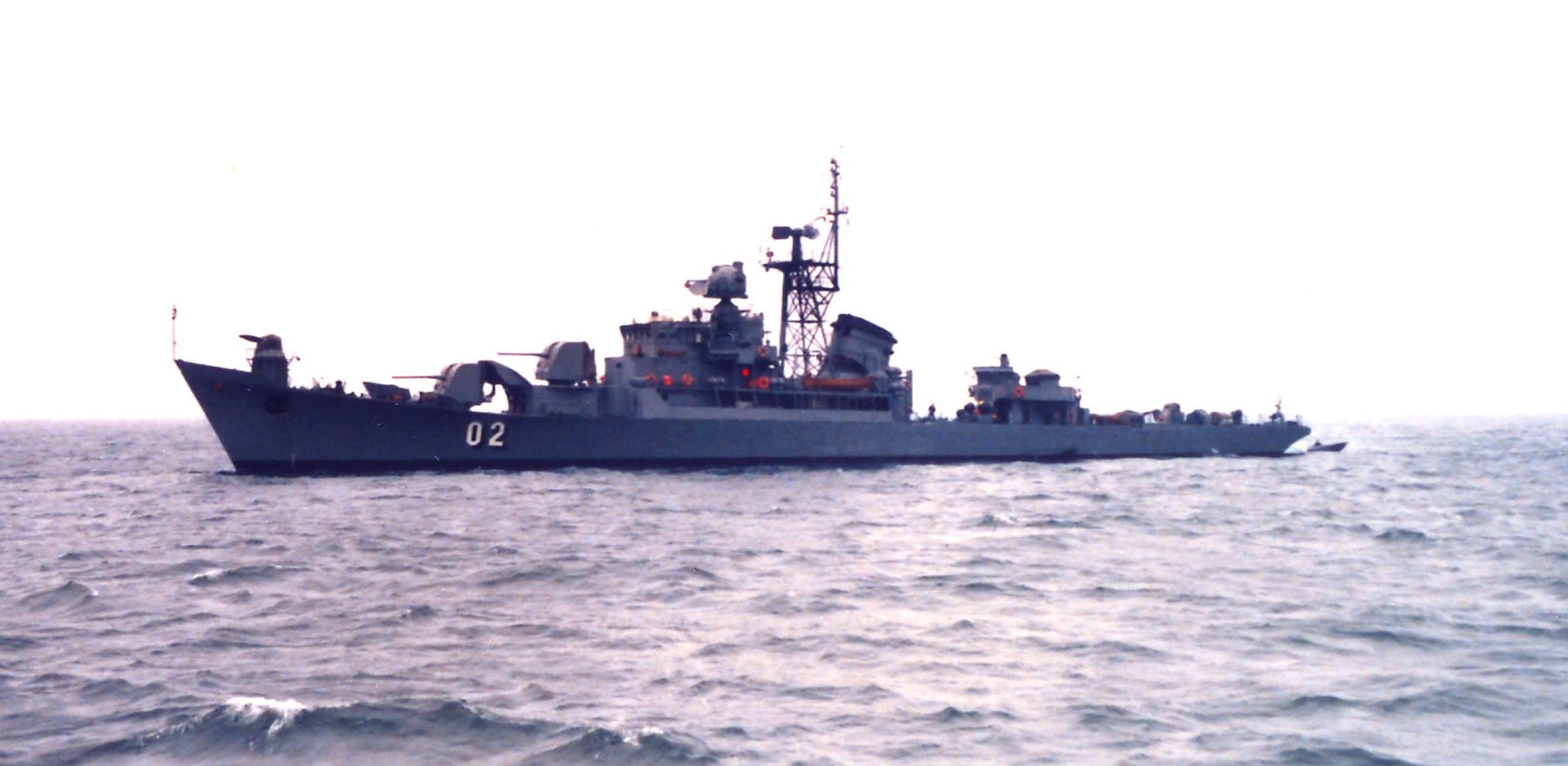
Development:
These Frigates were a cheaper, simplified version of the previous Kola class, ordered by Joseph Stalin about cost concerns. Indeed, the project 42 was built in a limited serie as for its large cost. The next SKR ordered by Stalin were to be 1,200 tons, and TTZ project 50 began. They were to match the following scheduling:
a) Concept development design complete in September, submitted in October 1950 to the TTZ
b) Technical project complete in February, submitted in March 1951
c) Construction of the lead ship started in mid-1951 and state tests in the 3rd quarter of 1952.
Design work was entrusted to TsKB-820 bureau. in the summer of 1950, technical issues were agreed upon, matching the given displacement and qualities but it proved impossible to comply with wind resistance requirements. A combined scheme of two powerplants was considered, and KVG-57/28 were designed in SKBK with naturally circulated and vertical boilers with extra radiation surface, one-way flue gas duct, two-front heating working at 370 ° С and 28 kg/sq. Cm. pressure. Highly accelerated, small-sized boilers were developed for all ships in the Soviet Navy thanks to these works. Forced Heating needs to be three-fold and a linear arrangement in the power plant was chosen.
Design:
For the first time, TV-9 high pressure steam turbines were introduced in frigates, and new radars were installed. Sensitive areas were protected by 8 mm (0.31 in) of armour and the armament reduced two three 100 mm (3.9 in) guns, but with remote power control, Yakor type FCD. The ships has teething reliability issues with its machinery. Project 50 Riga were a good package for their price, and made a perfect export vessel for developing countries where they were often modified to be multipurpose. The modernized Project 50 A appeared in the late 1950s and included RBU-2500 ASWRL, upgraded radar and permanent ballast.
Armaments wide, the B-34USM bow mounts were replaced by a single twin closed-type 100-mm B-34USM, studied by OKB-172. MBU-200 were replaced by the MBU-600 and 37-mm machine guns with 25 mm guns. Preliminary design was completed (Leningrad TsKB-820) on time and Admiral A.G. Golovko approved the swap of 4 BMB-1 with 4 BMB-2. Standard displacement was 1,059 tons. Later the SKB-700 SME, was ordered to MTU and triple TT bank.
With a large serie of 68 boats, these were the perfect match to repel USN “fleet snorkels” (GUPPY) of that time. The Riga also proved popular on export (East Germany, bulgaria, Finland, Indonesia), and in China gave the Chengdu class (Type 6601/01).
Specifications:
Displacement: 950/1,150 tons standard
Dimensions: 96 x 10.8 x 3.2 mm (315 x 35 x 10 ft)
Propulsion: 2 shaft CODAG: 2 gas turbines, diesel, 30,000 hp + 6,000 hp
Speed: 30 knots (56 km/h; 35 mph)
Range: 4,870 nm/10 kts, 450 nm/30 knots
Complement: 90
Armament: 2×2 76 mm, 2-4× RBU 6000 ASWRL 5× 406 mm TTs, 48 DC
Petya class Frigates -54 ships (1961-82)

Petya class by Andreas Sporri
Designated project 159 and derivatives, the Petya are the standard Aanti submarine warfare frigates of the 60s and 80s. 37 ships were built between 1960 and 1982 (in four modified versions). The first were the Petya I class (completed in 1961-64), sixteen ships, followed by a small serie of four Petya Ib modified in 1973-82 (Project 159M). This was followed by the Petya II class (project 159A), completed in 1964-69 of twenty-seven ships, and eventually nineteen Petya III, completed in 1968-77, the latter being built for exports to India (10), Ethiopia (2), Syria (2 ), and Viet-Nam (3).
The last two will serve as training ships in the Russian Navy. These were the first ASW frigates, and the first Russian ships to use combined gas and diesel turbines (CODAG). Their weapons and their sensors varied according to the types (Petya I and II modernized or modified). The Petya II possessed, for example, two RBU 6000 rocket launchers and two five-fold TLT ASW TT banks. One of them tested an ASW SUW-N-1 missile launcher and two more variable depth sonars. Five Petya II were subsequently exported (Vietnam, Ethiopia). In 1987-88, 3 were withdrawn from service and placed in reserve, followed by 8 in 1988-90 and 5 in 1990-91.

Author’s Petya illustration
Specifications
Displacement: 950, 1150t FL
Dimensions: 82.5 x 9.2 x 2.9 m
Propulsion: 2 shaft CODAG, 36,000 hp, 32 knots.
Crew: 90.
Electronics: Don-2 Radar, Slim Net, Hawk Screech, Herkules Sonar, Helicopter Sonar, 2 LL ECM Watch Dogs.
Armament: 4 x 76 mm AA (2×2), 2 RBU 2500, 2 ASW racks, 1×5 406 mm ASW TTs.
Mirka class Frigates -18 ships (1964-66)

Designated Project 35 and 35M, the Mirka class Soviet Frigates are modest ASW vessels, developed around RBU rocket launchers. They had four of them, RBU 6000 model, with 12 tubes each and 240 rockets in reserve. Each had a remote adjustable depth charge. This armament was completed with an ASW stern rack (for some of the Mirka I), and a quintuple bank for 16-in acoustic torpedo tubes, or two triples and only two RBU rocket launchers aft (Mirka II, project 35M). Modernization of the Mirka II saw the installation of variable depth sonar (SPV) instead of its ASW grenades benches at the stern. A total of 18 ships were built, used until 1989-90. Five were withdrawn this year, and another three in 1991. The others followed in 1995-98.

Author’s Mirka Class Frigates illustration
Specifications
Displacement: 950, 1150t FL
Dimensions: 82.5 x 9.2 x 2.9 m.
Propulsion: 2 shaft CODAG, 30 + 12,000 hp, 32 knots max.
Crew: 30.
Electronics: Radar Don-2, Slim Net, Hawk Screech, Sonar Herkules, SPV (Mirka II), 2 LL ECM Watch Dog.
Armament: 4 x 76 mm AA (2×2), 4 RBU 6000, 1 DCT, 1×5 406 mm ASW TT.
Krivak class Frigates -40 ships Krivak I, II, III, IV (1971-1990)
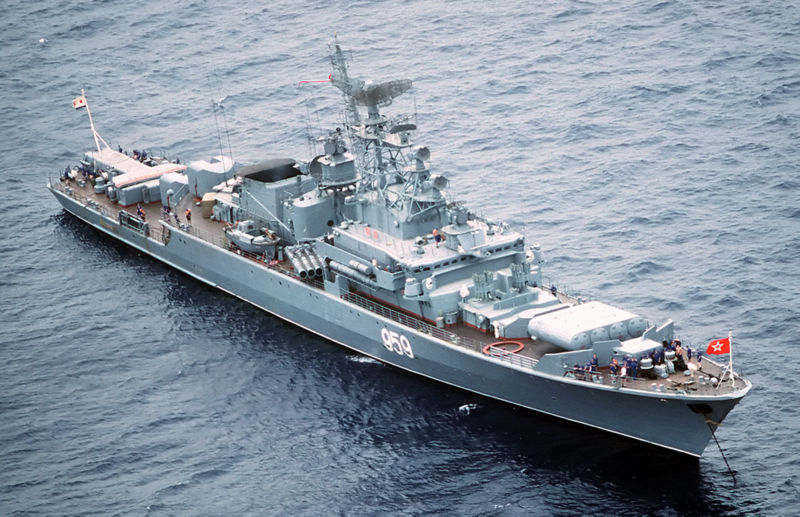
The Soviet Frigates of the Krivak class were the new standard of the seventies: They were the first Russian missile frigate. As early as 1956, a search for a successor to the “Petya” began. It was originally a unit with 76mm and 57mm AA guns, and TLT benches, but the design evolved. In 1963, a medium and short-range missile ship was searched for the Baltic and Black Sea fleets. The first project 935 specified two SA-N-4 triple ramps at the front. The type progressed to an ASW role as well and became Project 1135, with a single SS-N-14 “Flint” ASW/SSN quad launcher for short range antiship warfare.
This is how the Krivak class began, by far the most ambitious yet conceived in USSR. The Krivak I (1971-82; 13 ships) had the standard armament described below in the tables. The Kivak II (11 vessels) were a subclass comprising a variable-depth sonar housed at the stern, and two single 100 mm guns replacing the 76 mm. It appeared in 1978. The Krivak III (1984-90) was a redesigned version to accommodate the new SS-N-15 missiles. These 10 ships were also used by the KGB. Finally the Krivak IV were not an official underclass but a set of modifications and modernizations applied to first five Krivak I units. The Zarkiy and the Komsomolec received in 1988-91 a new hull sonar and their RBU rocket launcher 6000 were replaced by 8 single ramps SS-N-25. Total: 34 units, the last of which was launched in 1990 and operational in 1991. In 1990, there were 33 in service. Nowadays, only two are listed active, superseded by new generations of frigates.
https://www.youtube.com/watch?v=3wSaQOMAp-g
Russian footage of a KRIVAK-class frigate
On November 9, 1975, a mutiny broke out on the Storozhevoi (see notes above) but the ship, with a new crew, served until 1990. Currently, the Krivak class are also in service in Ukraine (2 units completed in 1991), two others withdrawn in 1992, three disarmed in 1994, and another in reserve. There were discussions recently as to built a modernized version for India or in India.
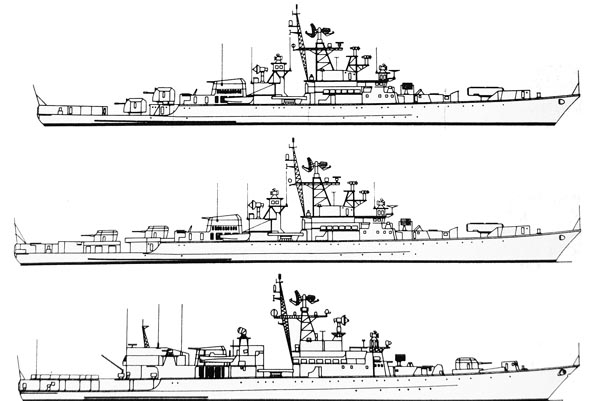
Krivak I, II and III comparison (Conway’s)

Author’s Krivak illustration
Specifications
Displacement: 3300t, 3575t FL
Dimensions: 123.5 x 14.1 x 4.6 m
Propulsion: 2 propellers, 2 CODAG turbines, 72,000 hp. and 32 nodes max.
Crew: 200
Electronic: Don-2 Radar, Don Kay, Spin Through Net C, 2 Eye Bowl, Kite Screech, 2 Pop Group, Bull Nose Sonars, Mare Tail SPV, 2 CME Bell Shroud, 2 Bell Squat, 4×16 LL.
Armament: 1×4 LM SSN14, 2×2 LM SN4 (silos, 40), 4 guns 76 (2×2), 2 LR ASW RBU 6000, 8 TLT 533 mm (2×4) ASW TTs, 20 mines.
Parchim II class Corvettes -8 ships (1985-1989)

Parchim KRI Pati Unus – Indonesia Navy.
It is rare for ship transfers to be made in the opposite direction towards the Russian big brother. This was the case for the frigates of the GDR, NATO Parchim class, ordered by USSR to support local industry and as quality was generally of an higher level, and for overall political reasons. German-built, they were multi-purpose ships, 24 in all built at Peenewerft, of which 16 has been used by the East German Navy and later transferred to the Indonesian Navy and eight Parchim II went to the Baltic fleet. They are still partly in use in 2020.
Built by Wolgast Peene-Werft yards, these Soviet Frigates were designed for coastal ASW, in case of a war in Europe. The scenario included for these vessels to hunt down small West German U-206 coastal submarines. The first was named Wismar, launched on 9 April 1981 in Rostock. Fifteen were built until 1986 and the Soviet Union agreed to purchase twelve more from Wolgaster Peenewerft, later built between 1986 and 1990 and because of this, seen as subsidising the East German shipbuilding industry.
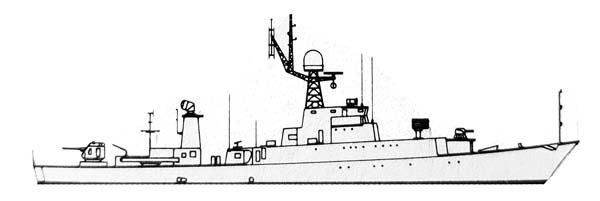
General scheme of the Parchim II (Conway’s profiles)
In Soviet service, NATO knew them as the Parchim II and they seemed surplus compared by the arguably more powerful Grisha class. The German re-unification thrown these ships between demolition yards to be resold to the Indonesian Navy in 1993, as is. In Indonesian service, the latter launched a refurbishing which actually exceeded the initial purchase. Some are still active in the Russian Baltic Fleet as well.

Author’s illustration of the Parchim
Koni class frigates -13(1) ship (1985-1989)

Delfin in 1982 – Koni II class, used in the black sea as training ship solely for exports.
The name Koni is the NATO reporting name, used for these anti-submarine warfare Soviet Frigates, contemporary to the Grisha-class and intended strongly for export. Known as Project 1159 their design started in 1970 and the blueprints were approved in 1973. The lead ship was laid down in 1974 and launched in 1975. In all, fourteen emerged from Zelenodolsk shipyard until 1988.
They were designed initially to replace the old Riga-class frigates, but soon exports were needed to various friendly navies, helping already hard-beaten economics in 1975.
The Koni I sub-class was designed for European waters and used by the Soviet Navy, while the Koni II was tailored for warmer waters and ideally export. A single ship was eventually retained by the Black Sea fleet, and only for training foreign crews to use these ships and help the exports. A few of these remain in service in some of the following countries: Algeria, Bulgaria, Cuba, East Germany, Egypt, Libya, Yugoslavia.

Koni class frigates – Conway’s blueprint
-The old Soviet training vessl was sold to Bulgaria in 1990. Renamed Smeli, still active.
-Algeria – Three sold and active today, currently upgraded with new electronics, with new ASW TTs, and Kh-35 Uran/SS-N-25 Switchblade SSNs.
-Cuba: Three, one unnamed, Monkada or Moncada all sunk as a reef or status unknown.
-East Germany: Three, two scrapped in 1990, one scrapped in 1995.
-Libya: Two, later one armed with a quad 406 mm torpedo tubes bank, Al Ghardabia damaged by bombing in 2011, Al Hani captured by NTC in Benghazi.
-Yugoslavia: Two, Split and Koper purchased in the 1980s and still active.
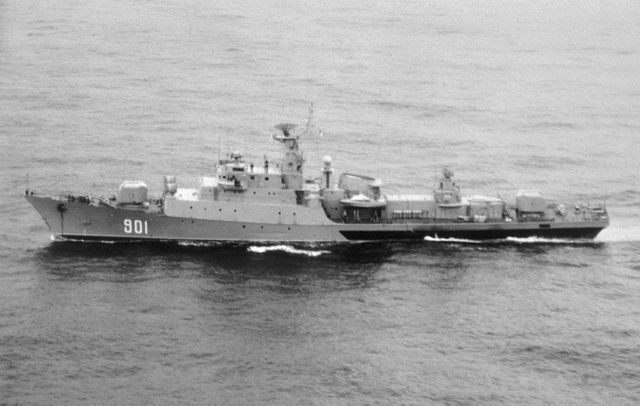
Algerian Mourad Rais in 1986
Neustrashimmy class frigates 2(7) ships (1988)
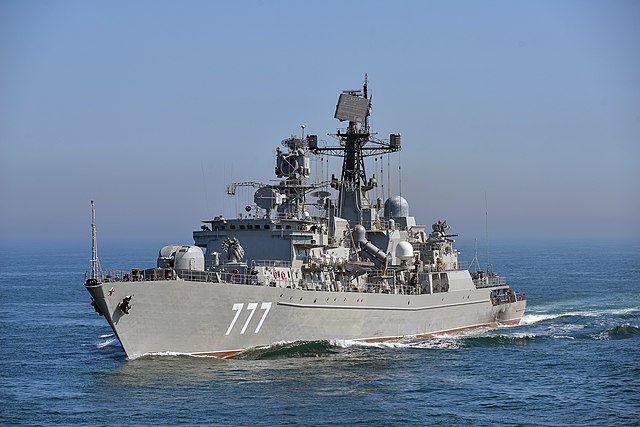
Yaroslav Mudry (ex-Nepristupnyi) during its voyage through the English Channel in April 2018
The last Soviet-era Frigates were scaled-up versions of the Krivak class. They were known as the Project 11540 Yastreb (hawk). Seven ships were planned, cut short by the fall of the Soviet Union and only two were completed, which are in active service with the Russian Baltic Fleet today.
They were classed as multipurpose ASW frigates, intended to gradually replace the earliest Krivak-class frigates. One of the core systems was the Zvezda-1 integrated sonar system (NATO Ox Tail), and the program started in 1986. Construction was frozen in 1990, and only Neustrashimy was in active service with the Russian Baltic Fleet. The second was delayed until 24 February 2009 renamed Yaroslav Mudry. She emerged the Yantar shipyard (Kaliningrad) and both ships were reassigned later to the Baltic Fleet.
These Soviet Frigates were reasonably fast and economical thanks to the CODOG, and carried two quadrupe SS-N-25 (only for Yaroslav Mudry), four octuple VLS for SS-N-9 SAM, a 12-tube RBU-6000 launcher, one 100mm and two Kashtan CIWS. Its torpedo armament comprised six 21-in superstructure tubes, able to launch the heavy Type 53 ASW/ASuW torpedoes, but also ASW missiles such as the SS-N-15/16. Their ASW search area is also greatly facilitated by a single Ka-27 Helicopter, hosted in a hangar. These made for the most efficient, blue water Frigates in service in the Russian Navy before the 2000s.
As Yaroslav Mudry was still in completion, in 2006, the next generation stealthy Frigates of the Russian Navy, Admiral Gorshkov-class, was just laid down. So far, they are the most recent Russian Frigates (outside the lighter Gepard, built mostly for export), with eight ships planned, intended for a commission in 2025-2026 for the last, the Gorshkov class are much larger, in the 5500 tonnes range. To compare, the old OH Perry displaced 4,100 long tons (4,200 t) fully loaded. But the next generation would be in the 7,400 short tons (6,700 t) range.

Neustrashimyy class as designed, 1990.
Specifications
Displacement: 3800t, 4400t FL
Dimensions: 129 x 15.6 x 5.6 m
Propulsion: 2 shaft CODAG turbines, 80,000 hp. and 30 knots
Crew: 210
Electronic: Radar: 1 Top Plate, 2 Palm Frond, Cross Sword, 1 Kite Screech. Sonar: LF bow mounted sonar and VDS
Armament: 2 × 4 SS-N-25, 4 × 8 VLS for SS-N-9, 1x 12 RBU-6000, 1 × 100mm, 2 Kashtan CIWS, 6 × 533mm TTs, Ka-27 Helicopter
Gepard class frigates -6 ships (1991…)
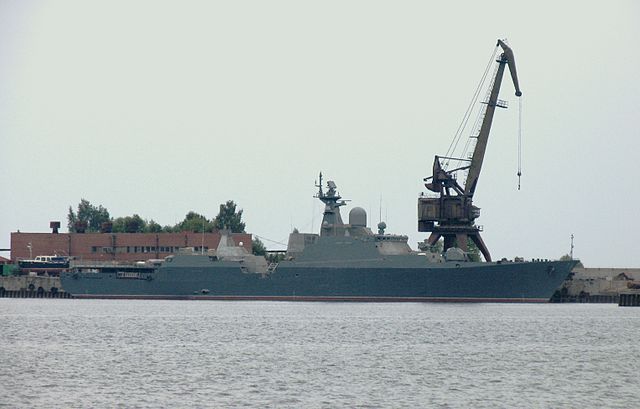
These Frigates are listed there only because their genesis started during the cold war, but they were laid down just after the fall of USSR. They were meant to be a replacement for the Koni class ships, as a mid-range, versatile and tailored for export. Project 1166.1 were also tailored for ASW warfare (in Soviet service) as replacement for the Grisha and Parchim-class corvettes. The lead ship, Yastreb (Hawk), was laid down at the Zelenodol’sk Zavod shipyard at Tatarstan in 1991, launched in July 1993, and completed by late 1995, but suspended due to lack of funds.
In Russian service, commissioned in 2002 she was eventually Renamed Tatarstan and became the flagship of the Caspian Flotilla. Two sister ships, Albatross and Burevestnik (Storm Petrel) saw the construction suspended and resumed as of 2012. Nowadays only Tararstan and Dagestan (ex-Albatross) are in service, in the Caspian sea. Until the fall of USSR the Caspian sea naval force was reduced due to neghbouring countries being part of the USSR. After the collapse and setup of the new Russian federation, the Caspian sea became a border sea with potentially hostile countries (Kazakhstan, Uzbekistan, Turkmenistan and Iran) and therefore the local fleet was reinforced.
We will return on the matter in a dedicated post on modern Russian frigates. The type was also exported: Four ships were in construction for Vietnam since 2007, also at Zelenodolsk Shipyard, active from 2011 (Dinh Tien Hoang class). Two more were planned HQ-017 and 018, but construction has yet to start.
Armaments and sensors of Soviet Frigates (with NATO designations)
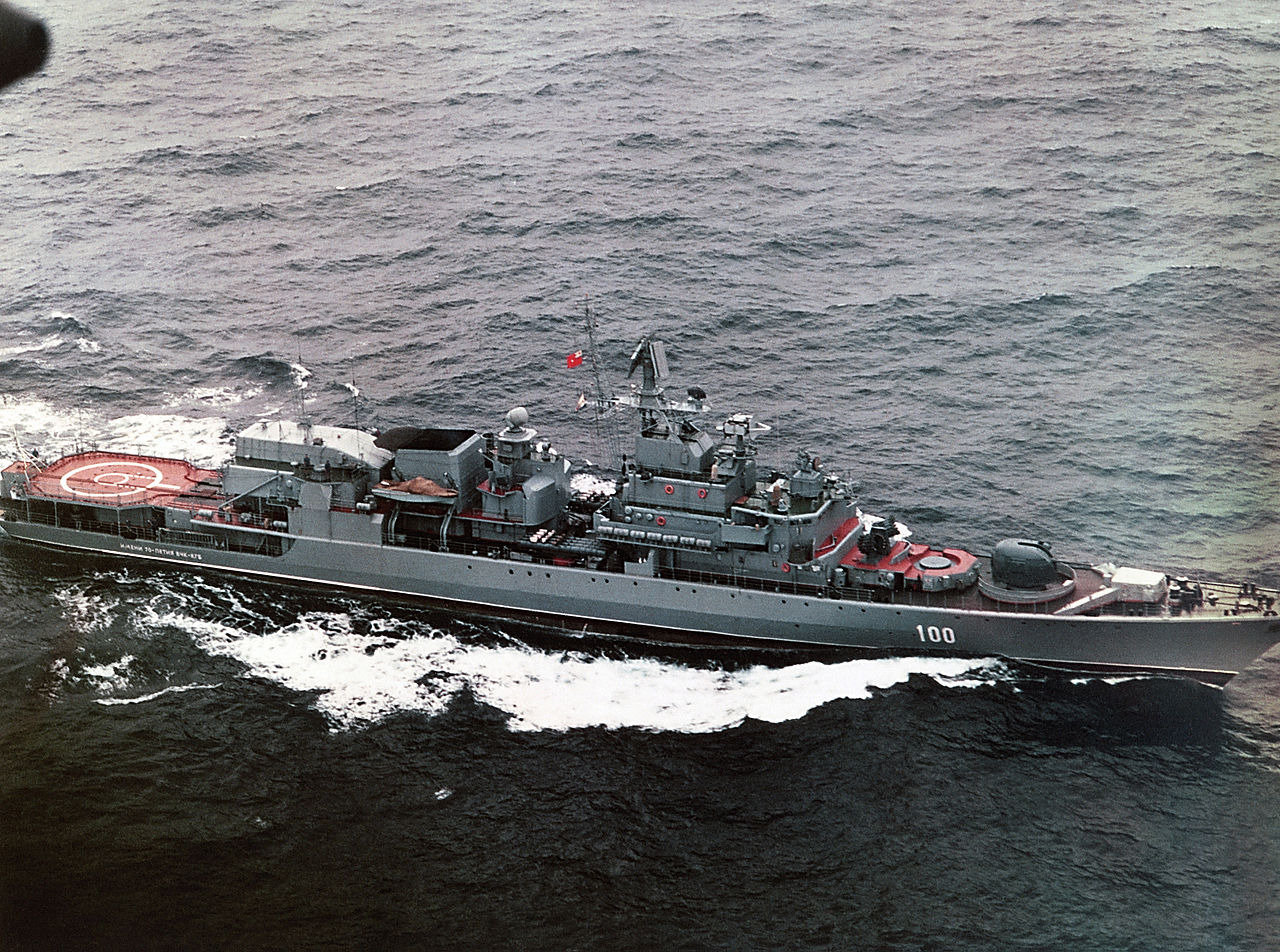
Armament of the KGB Krivak-III class frigate Imeni-70 Letiya V CheKa.
Gunnery armament DP and AA in Soviet Frigates:
-100 mm guns (First three classes), 76 mm guns (From the Petya class), 37 mm guns (early classes), 25 mm guns (early classes)
ASW weapons:
-Anti-submarine rocket launchers (ASRL): MBU 600, MBU 900, RBU 2500, RBU-6000
Torpedo Tubes
-533 mm torpedo tubes (21 in), 406 mm ASW torpedo tubes (16 in)
Missiles
-SS-N-14 ‘Silex’ SSM/ASW missiles (Krivak), Osa-MA SAM systems SA-N-4 ‘Gecko’ SAM (Krivak, Grisha)
Surface radars
Radar Don-2, Slim Net, Hawk Screech, Barret-2, Strut curve, Pop group, Drum Tilt, Positive-E, Spin Trough, MR-755 Fregat-M/Half Plate air/surf search
Sonars
Bass Tilt Hull Mounted Medium Frequency Sonar, Herkules hull mounted & dipping sonar, Zvezda-2 suite with MGK-345 Bronza/Ox Yoke bow mounted LF, Ox Tail LF VDS (Krivak, Parchim)
Fire control Systems:
Purga ASW combat system, Drakon/Eye Bowl SSM targeting, MPZ-301 Baza/Pop Group
Electronic warfare/Decoy systems
-Start suite, Bell Shroud intercept, Bell Squat jammer, PK-10/16 decoy RL, Various towed decoys
Read More/Src about soviet Frigates
Conway’s all the world’s fighting ships 1947-1995
https://www.kchf.ru/eng/ship/frigates/skr13.htm
https://www.globalsecurity.org/military/world/russia/1159.htm
https://www.militaryfactory.com/ships/detail.asp?ship_id=koni-class-project-1159-asw-frigate-soviet-union
The Koni class on Paluba.info
http://russianships.info/eng/warships/project_1159.htm
https://www.hazegray.org/features/russia/frigate.htm
https://archive.is/20121225075747/www.atrinaflot.narod.ru/2_mainclassships/06_skr_35/0_35.htm
http://russianships.info/eng/warships/project_35.htm
http://russianships.info/eng/warships/project_42.htm
https://ru.wikipedia.org/wiki/%D0%A1%D1%82%D0%BE%D1%80%D0%BE%D0%B6%D0%B5%D0%B2%D1%8B%D0%B5_%D0%BA%D0%BE%D1%80%D0%B0%D0%B1%D0%BB%D0%B8_%D0%BF%D1%80%D0%BE%D0%B5%D0%BA%D1%82%D0%B0_42
https://en.wikipedia.org/wiki/Kola-class_frigate
https://web.archive.org/web/20111005020113/http://www.atrinaflot.narod.ru/2_mainclassships/06_skr_42/0_42.htm
https://web.archive.org/web/20080112063138/http://www.navycollection.narod.ru/ships/Russia/Frigates/SKR_Proect_42/history.html
https://web.archive.org/web/20080123200608/http://www.atrinaflot.narod.ru/2_mainclassships/06_skr_50/0_50.htm
https://en.wikipedia.org/wiki/Petya-class_frigate

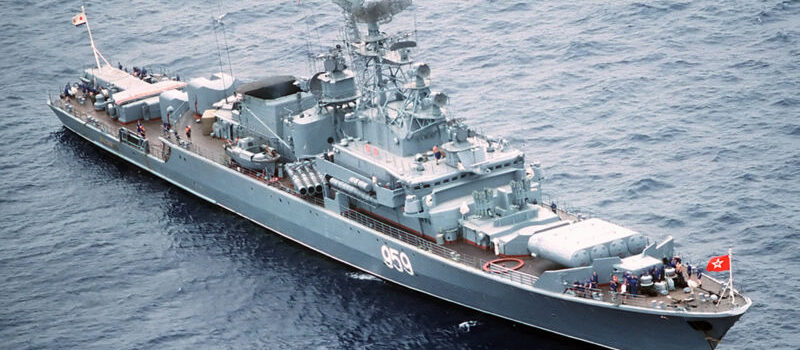

 Latest Facebook Entry -
Latest Facebook Entry -  X(Tweeter) Naval Encyclopedia's deck archive
X(Tweeter) Naval Encyclopedia's deck archive Instagram (@navalencyc)
Instagram (@navalencyc)





 French Navy
French Navy Royal Navy
Royal Navy Russian Navy
Russian Navy Armada Espanola
Armada Espanola Austrian Navy
Austrian Navy K.u.K. Kriegsmarine
K.u.K. Kriegsmarine Dansk Marine
Dansk Marine Nautiko Hellenon
Nautiko Hellenon Koninklije Marine 1870
Koninklije Marine 1870 Marinha do Brasil
Marinha do Brasil Osmanlı Donanması
Osmanlı Donanması Marina Do Peru
Marina Do Peru Marinha do Portugal
Marinha do Portugal Regia Marina 1870
Regia Marina 1870 Nihhon Kaigun 1870
Nihhon Kaigun 1870 Preußische Marine 1870
Preußische Marine 1870 Russkiy Flot 1870
Russkiy Flot 1870 Svenska marinen
Svenska marinen Søværnet
Søværnet Union Navy
Union Navy Confederate Navy
Confederate Navy Armada de Argentina
Armada de Argentina Imperial Chinese Navy
Imperial Chinese Navy Marinha do Portugal
Marinha do Portugal Mexico
Mexico Kaiserliche Marine
Kaiserliche Marine 1898 US Navy
1898 US Navy Sovietskiy Flot
Sovietskiy Flot Royal Canadian Navy
Royal Canadian Navy Royal Australian Navy
Royal Australian Navy RNZN Fleet
RNZN Fleet Chinese Navy 1937
Chinese Navy 1937 Kriegsmarine
Kriegsmarine Chilean Navy
Chilean Navy Danish Navy
Danish Navy Finnish Navy
Finnish Navy Hellenic Navy
Hellenic Navy Polish Navy
Polish Navy Romanian Navy
Romanian Navy Turkish Navy
Turkish Navy Royal Yugoslav Navy
Royal Yugoslav Navy Royal Thai Navy
Royal Thai Navy Minor Navies
Minor Navies Albania
Albania Austria
Austria Belgium
Belgium Columbia
Columbia Costa Rica
Costa Rica Cuba
Cuba Czechoslovakia
Czechoslovakia Dominican Republic
Dominican Republic Haiti
Haiti Hungary
Hungary Honduras
Honduras Estonia
Estonia Iceland
Iceland Eire
Eire Equador
Equador Iran
Iran Iraq
Iraq Latvia
Latvia Liberia
Liberia Lithuania
Lithuania Mandchukuo
Mandchukuo Morocco
Morocco Nicaragua
Nicaragua Persia
Persia San Salvador
San Salvador Sarawak
Sarawak Uruguay
Uruguay Venezuela
Venezuela Zanzibar
Zanzibar Warsaw Pact Navies
Warsaw Pact Navies Bulgaria
Bulgaria Hungary
Hungary

 Bundesmarine
Bundesmarine Dutch Navy
Dutch Navy Hellenic Navy
Hellenic Navy Marina Militare
Marina Militare Yugoslav Navy
Yugoslav Navy Chinese Navy
Chinese Navy Indian Navy
Indian Navy Indonesian Navy
Indonesian Navy JMSDF
JMSDF North Korean Navy
North Korean Navy Pakistani Navy
Pakistani Navy Philippines Navy
Philippines Navy ROKN
ROKN Rep. of Singapore Navy
Rep. of Singapore Navy Taiwanese Navy
Taiwanese Navy IDF Navy
IDF Navy Saudi Navy
Saudi Navy Royal New Zealand Navy
Royal New Zealand Navy Egyptian Navy
Egyptian Navy South African Navy
South African Navy






























 Ukrainian Navy
Ukrainian Navy dbodesign
dbodesign